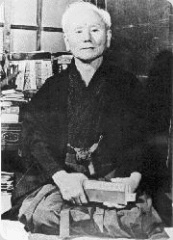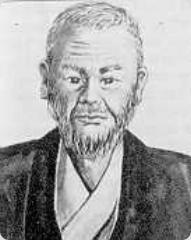![]()
 |
Legend has it, that in the sixth century an Indian Buddhist monk by the name of Bodhidharma made the long and hazardous journey from India to China, in order to instruct the monks of the Shaolin Temple in Zen.
However, the regime he demanded was physically too severe for his followers. Therefore, he is said to have devised a system of mental and physical training that they should follow in order to be strong enough to follow his path to fulfillment.
Some scholars maintain that Bodhidharma had little to do with Martial Arts expertise that was to flourish within the Temple, whatever the truth the expertise of the monks became legend.
The following centuries were a time of great civil unrest with several wars. With the downfall of the Monasteries the warrior monks roamed the land teaching Zen and spreading the Martial Arts. With the Arts tested in battle, and with the natural rule being the survival of the fittest, the useless techniques eliminated, as were the exponents.
The general unrest of these times was not confined to the mainland. The Island of Okinawa, the largest of the Ryu Kyu group, had also developed rudimentary fighting Arts which had probably developed from the Shaolin Monks. In the eleventh century due to feudal wars in Japan, a large number of refugees many of them warriors, fled to Okinawa and added to the Arts already practiced on the Island.
The fourteenth century Okinawa came under the control of China, many of the military attaches were themselves highly skilled in the Martial Arts and some of them taught their skills to the local fighters.
Fighting without weapons was at this time considered by the upper classes and armed warriors to be nothing more than a common form of brawling and fell out of fashion. This led to the fighting Arts of Okinawa to take place in secret.
 |
In the mid nineteenth century the Japanese government began conscripting Okinawans and impressed by the physical conditions of certain individuals, those that practiced the Martial Arts, this led indirectly to the practice of Martial Arts in schools of Okinawa.
The person that was responsible for teaching an Art known as Chinese Hand was a school teacher by the name Gichin Funakoshi. Funakoshi is regarded as the father of modern Karate, being responsible for the first displays of Karate on the Mainland in 1917 and again in 1922. He wrote the first book on Karate, and was responsible for the first change of name from ‘Chinese Hand’ to ‘Empty Hand’ ; ( Empty - Kara, Hand - Te ). Funakoshi’s pen name was Shoto therefore students who trained at Funakoshi’s ( Shoto’s ) House ( Kan ) were of the Shoto Kan.
Karate as a sport was not explored fully until the fifties, under rules devised by the Japan Karate Association, headed by Masatoshi Nakayama, one of Funakoshi’s former students. The most successful exponent at this time was Hirokazu Kanazawa who was later instrumental in bringing Karate to Britain in the early sixties.
Sensei (teacher) Kanazawa along with Sensei Enoeda set about bringing Shotokan Karate to all corners of the country.


 Tweets by @456791084064976896
Tweets by @456791084064976896


